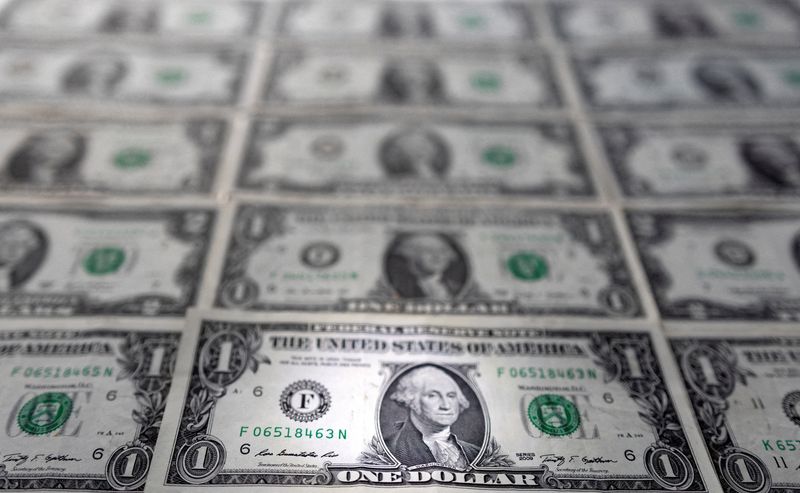By John McCrank
NEW YORK (Reuters) - The U.S. dollar index hit nearly a one-month low on Tuesday after European Central Bank President Christine Lagarde said euro zone interest rates will likely be in positive territory by the end of the third quarter, giving the euro a boost.
Lagarde's comments implied an increase of at least 50 basis points to the ECB deposit rate and fueled speculation of bigger hikes this summer to fight a surge in inflation tied to rising energy prices caused by the war in Ukraine and massive public-sector stimulus after the onset of the coronavirus pandemic.
The euro was up 0.42% at $1.07355 at 3:25 p.m. EDT (1925 GMT). Over the past seven trading sessions, the single currency has rebounded 3.7% after having fallen to its lowest level since January 2017, at $1.0349, earlier this month.
"They were a little bit late in the party, in comparison to the Fed," John Doyle, vice president of dealing and trading at Monex USA, said of the ECB.
"But if you're going to see them try to catch up a bit to our tightening cycle over here, then that differential that the dollar has enjoyed between the Fed and the ECB has tightened a bit and that's why you've seen the euro get some relief from those multi-year lows," he said.
In the United States, most of the foreseeable monetary policy tightening by the Federal Reserve has likely been priced in already, said Marshall Gittler, head of investment research at BDSwiss.
"This difference in expectations could propel EUR/USD higher still over the next several sessions as the market has only recently begun to reprice this differential," he said.
Minutes from the Fed's May 3-4 policy meeting are due to be released on Wednesday.
Against a basket of other major currencies, the dollar was down 0.372% at 101.76, its lowest level since April 26.
The greenback weakened further after data showed U.S. business activity slowed in May as higher prices cooled demand for services while renewed supply constraints because of COVID-19 lockdowns in China and the war in Ukraine hampered production at factories.
S&P Global (NYSE:SPGI) said its flash U.S. Composite PMI Output Index, which tracks the manufacturing and services sectors, showed the pace of growth was the slowest in four months.

Sterling fell against the U.S. dollar after PMI data showed that momentum in Britain's private sector slowed much more than expected this month, adding to recession worries as inflation pressures ratcheted higher. The British pound was down 0.48% at $1.2525.
The risk-sensitive Aussie dollar dipped 0.2% to $0.70965. The New Zealand dollar was 0.39% weaker at $0.64425, a day before the country's central bank is widely expected to raise its key interest rate by half a percentage point. 96284aac-4f75-4305-a55b-d88c4a62460b2